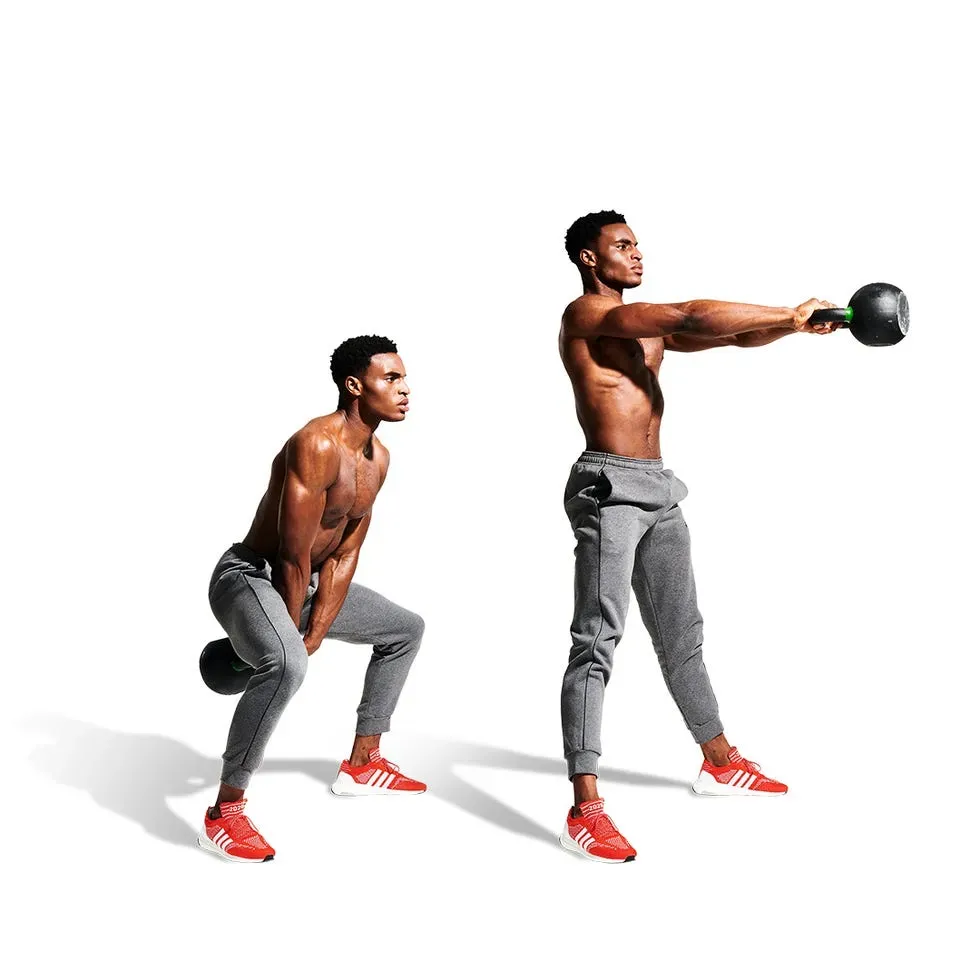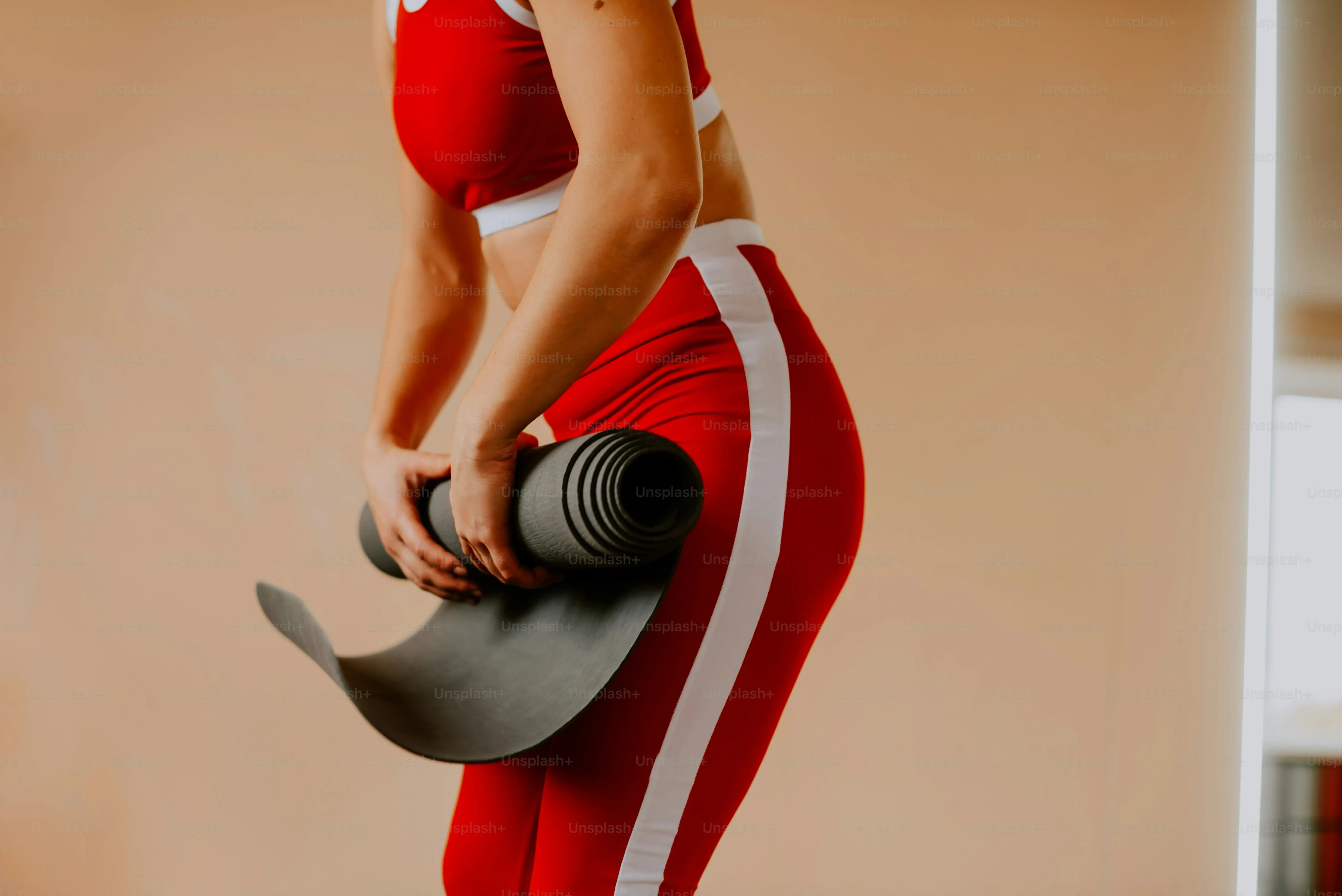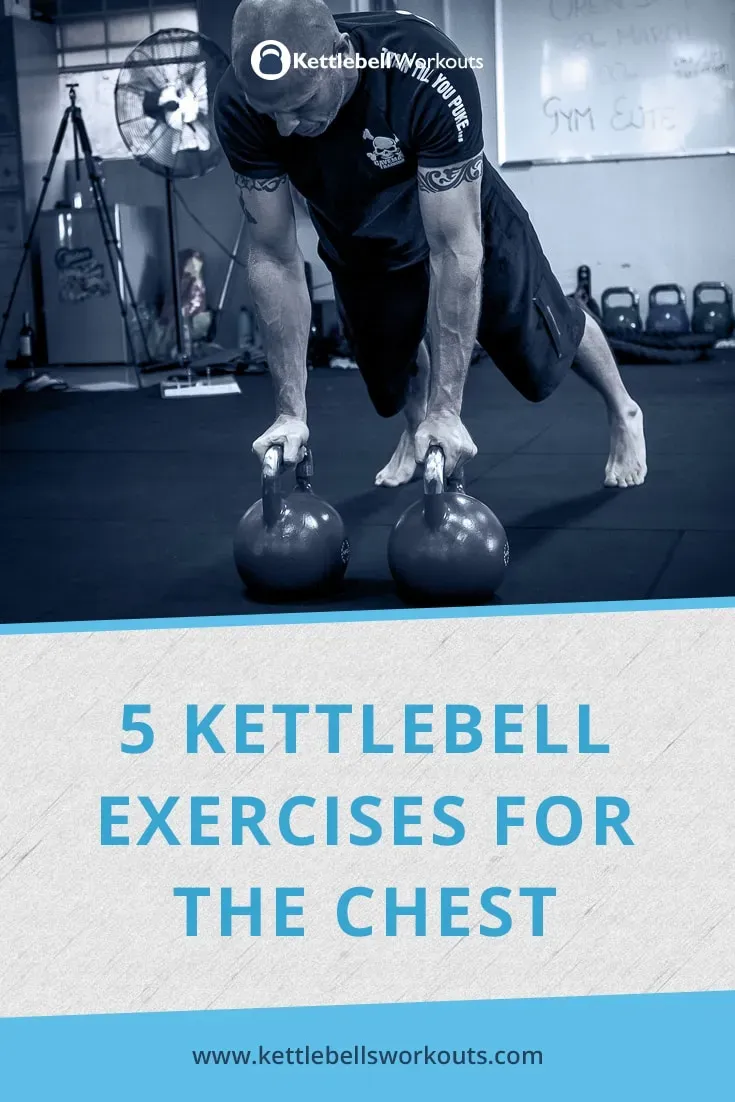Table of Contents
Hitting your chest and arms with dumbbells or barbells? Sure, it works. But maybe you're tired of the same old routine, or perhaps you're just looking for a tool that demands a little more from your stability and grip. Enter the kettlebell. It's not just for swings and squats, though those are great. That cannonball with a handle offers a unique challenge for building upper body strength and size. If you’re wondering how to really target those pecs and biceps without racks and benches, you're in the right place. This article dives into creating an effective kettlebell workout for chest and arms that goes beyond the usual suspects.
Why Kettlebells for Your Chest and Arms?

Why Kettlebells for Your Chest and Arms?
More Than Just Swings and Snatches
Look, when most people picture kettlebells, they think of cardio or maybe lower body power. Swings, cleans, snatches – the ballistic stuff. And yes, kettlebells excel at that. But dismissing them for upper body work, especially a solid kettlebell workout for chest and arms, is like ignoring half the toolbox. The off-center weight distribution isn't a bug; it's a feature. It forces smaller stabilizing muscles to fire up in ways a symmetrical dumbbell just doesn't. Think about a chest press: holding that bell with the weight hanging below your hand requires more control through the shoulder and core than a standard dumbbell. This isn't just about moving weight; it's about controlling mass.
Training with kettlebells often feels more dynamic, even in slower, grinding movements like presses. You're not just pushing straight up; you're managing the bell's tendency to wobble or shift. This translates to better shoulder health and overall stability, which is crucial whether you're pressing heavy or just reaching for something on a high shelf. And for arms? Bicep curls with kettlebells feel surprisingly different – the handle thickness and weight distribution challenge your grip and forearm strength more intensely than a typical barbell or dumbbell. It's a different stimulus, and different stimulus equals new growth potential.
Functional Strength and Joint Health
The way kettlebells sit in your hand, particularly in the rack position for presses or during curls, encourages better wrist and elbow alignment than some traditional exercises. This can be a game-changer for folks with cranky joints. Because you're often working unilaterally (one side at a time) or managing two independent weights, you quickly identify and address imbalances between your left and right sides. Ever notice one arm struggles more on presses? Kettlebells highlight that. Fixing those imbalances is key to long-term strength and injury prevention, not just for a kettlebell workout for chest and arms, but for everything you do.
Plus, the continuous tension you can maintain with kettlebells, especially during movements like floor presses or pullovers, can really light up the target muscles. It's not about bouncing the weight; it's about controlled movement through the full range of motion. This focus on control under load builds resilient strength that carries over to real-world tasks – lifting groceries, pushing a heavy door, or just generally being less likely to tweak something awkward. It’s about building a robust, functional upper body, not just bigger vanity muscles.
- Kettlebells challenge stabilizer muscles more than dumbbells.
- Off-center weight requires greater control and coordination.
- Grip and forearm strength get a significant boost.
- They help identify and correct muscular imbalances.
- Promotes better joint health and functional strength.
Mastering Kettlebell Chest Presses and Flies

Mastering Kettlebell Chest Presses and Flies
Alright, let's get down to the nitty-gritty of actually hitting your chest with these things. Forget the bench press for a minute; the kettlebell floor press is your new best friend for a solid kettlebell workout for chest and arms. Lie on your back, knees bent, feet flat. Clean the kettlebells to your chest, resting them on your forearms in that rack position. From here, press them straight up, keeping your elbows at about a 45-degree angle to your body. The difference here is controlling the bell as you lower it; it wants to pull your wrist back or wobble outwards. Resist that. Focus on a controlled eccentric (lowering) phase. For flies, also done on the floor, start with the bells overhead like you finished the press. With a slight bend in your elbows, lower the bells out to the sides in an arc, feeling the stretch across your chest. The kettlebell handle makes this feel different than dumbbells – more unstable, demanding more work from your pecs to stabilize the weight at the bottom. It’s less about how much you can lift and more about how well you can control the load through the movement.
Targeting Arms: Swings, Cleans, and Presses

Targeting Arms: Swings, Cleans, and Presses
Beyond the Bicep Curl Machine
so we've talked chest, but what about the arms? When you think of a kettlebell workout for chest and arms, the arm part often gets overlooked unless you're just doing standard curls (which you can do, by the way, and they feel different!). But the beauty of kettlebells for arms isn't just isolation; it's integration. Think about the clean: you're not just flopping the weight up; you're using hip drive, yes, but the pull and the catch in the rack position seriously engage your biceps and forearms in a dynamic way. It’s functional strength, not just show muscles, though you'll build those too. This kind of movement pattern builds resilient elbows and strong grips, which are frankly more useful in life than just being able to do a perfect concentration curl.
Arm Work Within Full-Body Movements
Even the swing, primarily a hip hinge, demands isometric grip strength that will light up your forearms. And the press we discussed earlier? It’s a triceps killer on the lockout, especially single-arm presses where your core and shoulder stabilizers are working overtime alongside the triceps. You also have movements like the kettlebell strict press or the push press, both fantastic for triceps and shoulder strength. It’s about getting more bang for your buck. You hit the target muscles, but also all the little helpers that make your arms strong and stable in real-world scenarios. Combining these ballistic and grinding movements is how you build a truly comprehensive kettlebell workout for chest and arms.
- Kettlebell cleans engage biceps and forearms dynamically.
- Swings build significant grip and forearm strength.
- Kettlebell presses are excellent for triceps development.
- Movements often work arms and stabilizers simultaneously.
- Provides functional strength beyond isolation exercises.
Putting it Together: Crafting Your Kettlebell Workout for Chest and Arms

Putting it Together: Crafting Your Kettlebell Workout for Chest and Arms
Picking the Right Tools and Frequency
so you've got some kettlebells, maybe a pair, maybe just one. How do you actually build a solid kettlebell workout for chest and arms that isn't just random flailing? First, figure out your goal. Are you chasing muscle size (hypertrophy) or raw strength? This dictates your sets, reps, and exercise selection. For most people, hitting chest and arms directly maybe 1-2 times a week is plenty, especially if you're also doing full-body kettlebell work that hits these muscles indirectly. You don't need a dozen exercises. Pick a couple of core presses, maybe a fly variation, and then some arm-focused movements. For chest, the floor press is gold. It's safer because the floor acts as a hard stop, preventing you from going too deep if your shoulders aren't ready. For arms, think cleans, strict presses, or even those slightly awkward but effective kettlebell curls.
Don't feel like you need matching pairs of kettlebells for everything either. Single-arm work is fantastic for core engagement and evening out imbalances. A single heavier bell works great for swings and cleans, while a lighter pair might be better for flies or higher-rep presses. It's about making the most of what you have. If you only have one bell, you'll just do more unilateral work, which is arguably better for you anyway. Consistency beats complexity every time. Figure out what exercises you can perform safely with the bells you own and stick to them for a few weeks before swapping everything out.
Structuring Your Training Session
Once you have your exercises, how do you put them in order? A typical strength or hypertrophy session might start with your main pressing movement, like the double kettlebell floor press. Do your heavier sets here when you're fresh. Then move to a slightly lighter or more stability-focused chest exercise, like single-arm floor presses or maybe kettlebell pullovers. After the chest work is mostly done, transition to your dedicated arm movements. This could be kettlebell cleans, followed by some strict presses, and maybe finishing with a couple of sets of kettlebell curls or overhead triceps extensions.
For reps and sets, a general rule of thumb: lower reps (say, 3-6) for strength with longer rest periods (2-3 minutes), and moderate to higher reps (8-15) for hypertrophy with shorter rest (60-90 seconds). Don't be afraid to mix it up. You could do heavy presses for low reps, then lighter flies for higher reps in the same workout. The key is listening to your body and focusing on executing each rep with control. That wobbly kettlebell demands it.
- Choose 2-3 chest exercises (e.g., floor press, fly, pullover).
- Select 2-3 arm exercises (e.g., clean, press, curl, extension).
- Consider single vs. double kettlebell variations.
- Start with heavier compound movements.
- Follow with isolation or higher-rep exercises.
- Adjust reps/sets based on strength (low reps, long rest) vs. hypertrophy (moderate-high reps, shorter rest).
Beyond the Basics: Progression and Avoiding Pitfalls

Beyond the Basics: Progression and Avoiding Pitfalls
How to Keep Making Gains
Hitting a plateau feels like running into a brick wall, doesn't it? You're doing your kettlebell workout for chest and arms diligently, but the weights feel easy, or you just aren't seeing changes. This is where progression comes in. It's not rocket science, but it requires a plan beyond just showing up. The simplest way? Increase the weight. If you have access to heavier bells, jump up when you can comfortably hit the top end of your rep range for all sets with good form. Can't jump weight easily? Increase the reps within your target range. If you were doing sets of 8, aim for 10 or 12.
Another trick is increasing volume – add an extra set to an exercise, or even an extra exercise if your recovery allows. You could also decrease rest time between sets, making the workout denser and more challenging. Then there's time under tension; slow down the lowering phase of your presses or flies. Make that eccentric portion last 3-4 seconds. It burns in a good way and forces your muscles to work harder. Don't underestimate the power of simply improving your form; a cleaner, more controlled movement often works the target muscle more effectively than just heaving a heavier weight.
Steering Clear of Common Errors
It's easy to get sloppy, especially as you get tired or try to lift heavier. For kettlebell chest exercises, a big one is letting the bells crash down at the bottom of a press or letting the handles yank your wrists back. Control is paramount. Don't prioritize ego over execution. If the bell is wobbling all over the place during a press, it's too heavy, or your form is off. For arm work, like curls, swinging the weight up using momentum defeats the purpose; you're trying to work the biceps, not practice a poor imitation of a clean. Keep the movement strict.
Another pitfall? Ignoring imbalances. Since you're often working unilaterally, pay attention if one side is significantly weaker or less coordinated. Address it with dedicated single-arm work or even start your sets on the weaker side. Overtraining is also a real risk. More isn't always better. If your shoulders are barking or your elbows feel like garbage, pushing through isn't brave; it's stupid. Recovery is when you actually build muscle, not in the gym.
Progression Method | How to Apply | Why it Works |
|---|---|---|
Increase Weight | Move to heavier kettlebells when reps feel easy. | Directly increases resistance, forcing adaptation. |
Increase Reps/Sets | Do more reps per set or add sets. | Increases total work volume. |
Decrease Rest Time | Shorten breaks between sets. | Increases workout density and metabolic stress. |
Increase Time Under Tension | Slow down the eccentric (lowering) phase. | Increases muscle fiber recruitment and stimulus. |
Listen to Your Body and Recover
Seriously, this isn't just fluffy advice. If you're constantly sore, tired, or have nagging joint pain, your kettlebell workout for chest and arms (and everything else) is suffering, or worse, setting you up for injury. Recovery isn't just sitting on the couch, though rest days are essential. It includes getting enough sleep – aiming for 7-9 hours is non-negotiable for muscle repair and hormonal balance. Nutrition matters too; you can't build muscle out of thin air. Make sure you're getting adequate protein and calories to support growth and recovery.
Active recovery, like light walks or gentle stretching, can also help. Pay attention to subtle cues. A little muscle soreness is fine; sharp joint pain is not. If a movement feels wrong, stop. Don't be afraid to take an extra rest day or deload (reduce the weight or volume) periodically. Consistency over time, built on a foundation of smart training and recovery, is what actually gets results. Trying to smash yourself every single session is a fast track to burnout and frustration, not bigger arms and chest.
Wrapping Up Your Kettlebell Upper Body Workout
So, there you have it. A solid kettlebell workout for chest and arms isn't some mythical beast. It's built on consistent application of fundamental movements. You've got the tools – presses, flies, rows (yes, we touched on them for balance), and the arm-specific lifts. Putting them together requires a bit of thought regarding volume and intensity, just like any other training method. Kettlebells offer a different feel, challenging your grip and stabilizers in ways static bars often don't. It's not a magic bullet, but it's a legitimate path to building a stronger, more capable upper body. Stick with it, focus on form, and don't be afraid to experiment within these guidelines to find what works best for you.